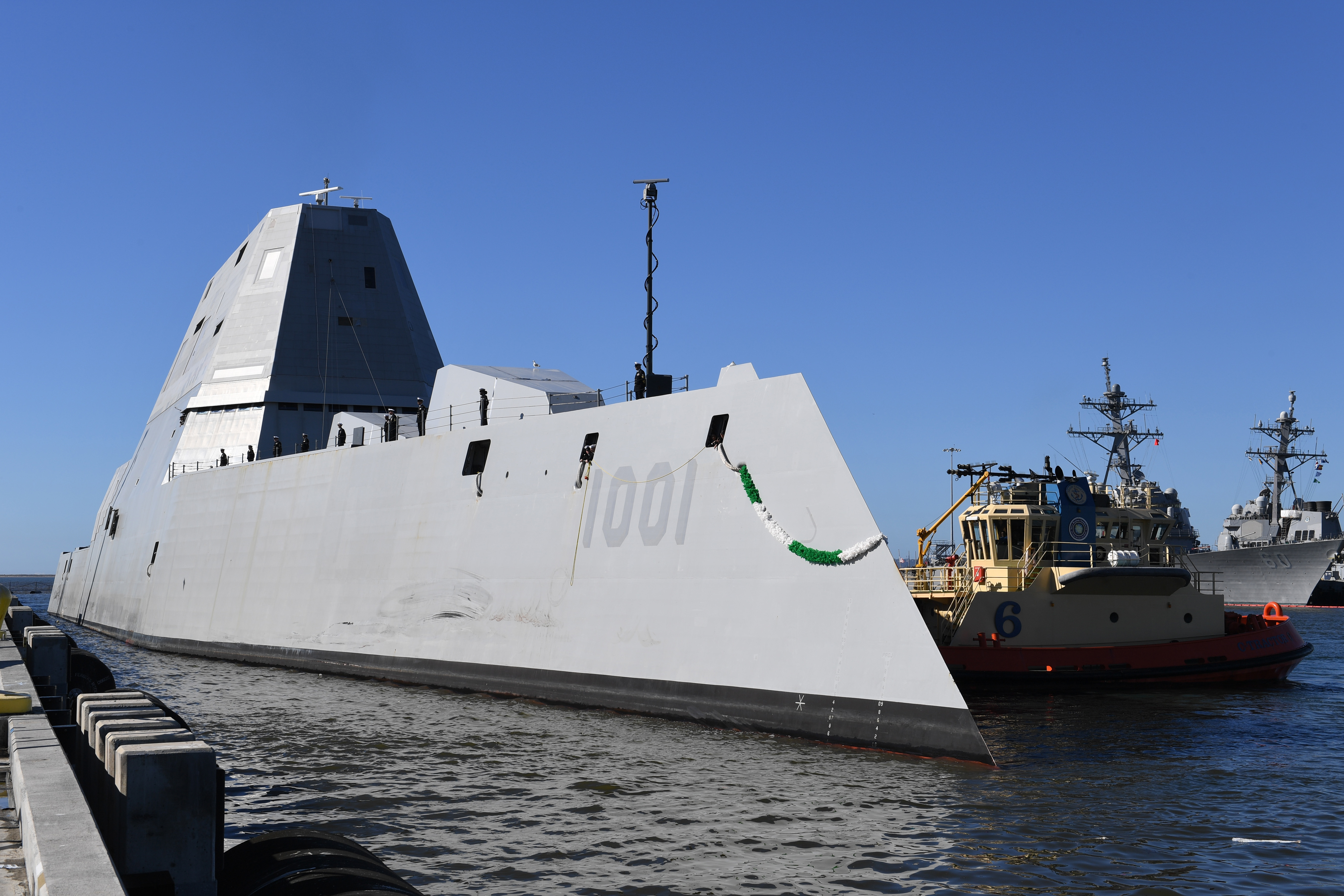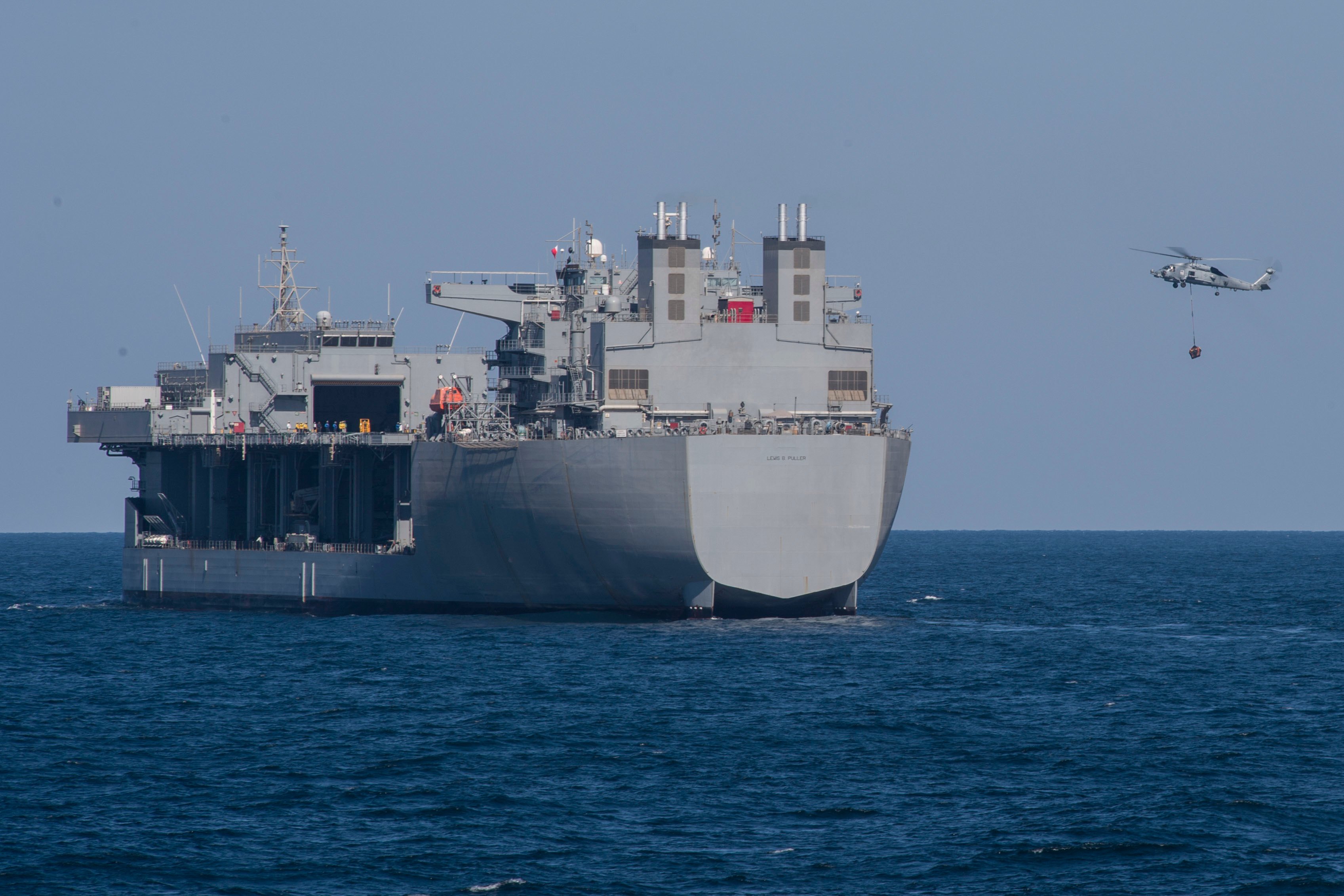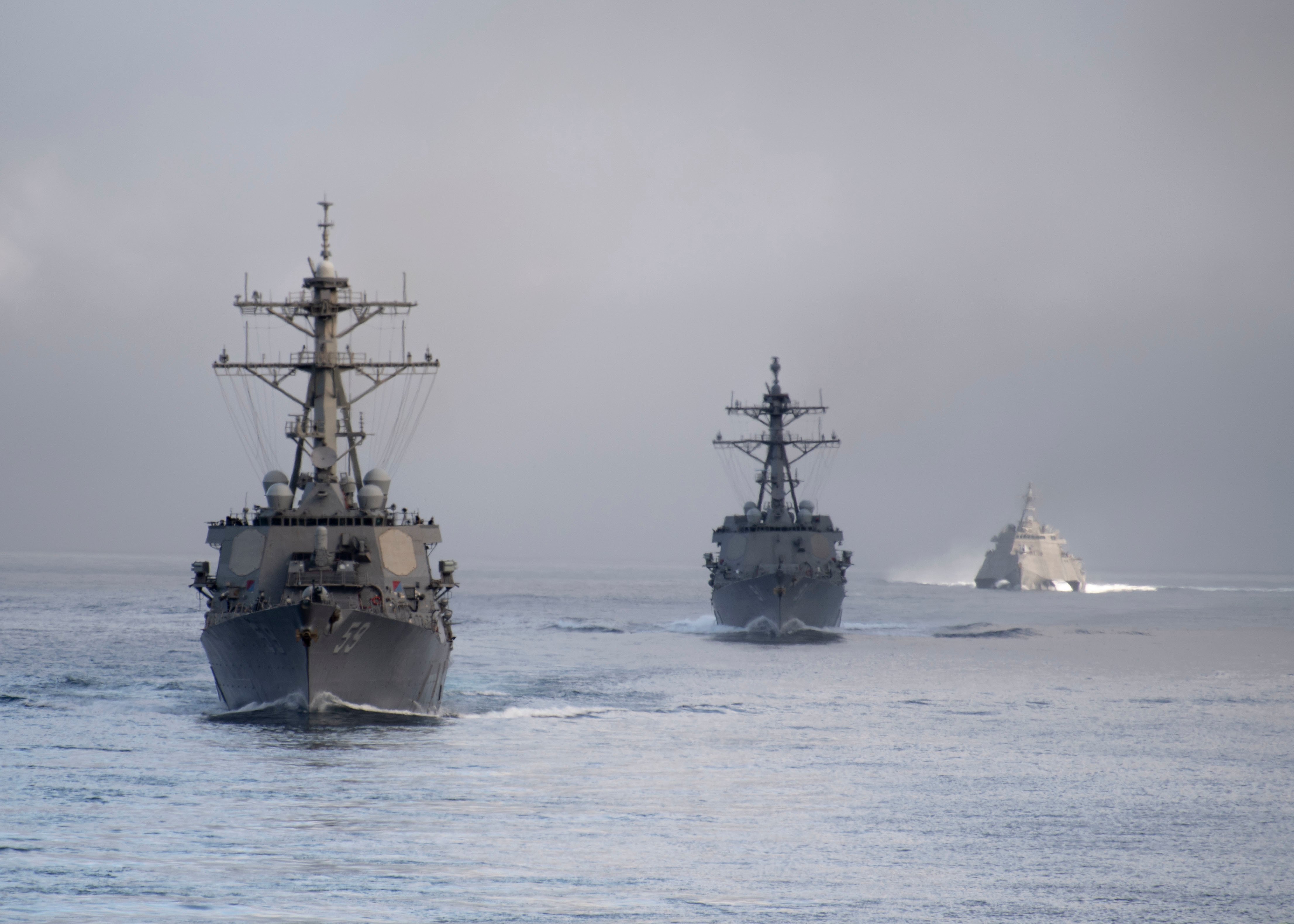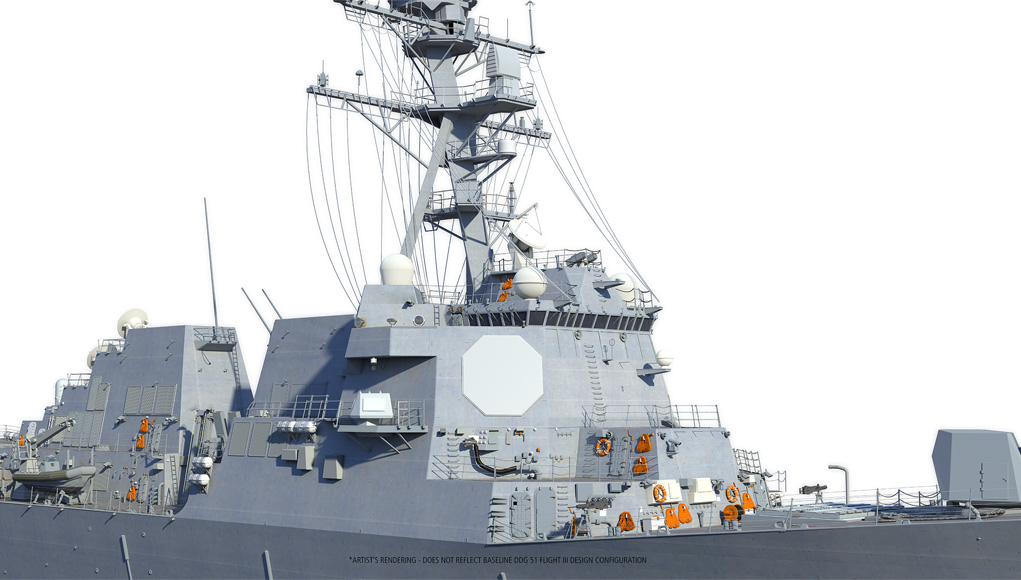
SAN DIEGO – The Navy is striving to field “revolutionary combat capability” in new ships and through mid-life modernizations, but it can do so while keeping risk low by focusing on new weapons and systems rather than radical new hull designs, the program executive officer for ships said.
Noting previous challenges with revolutionary ship designs such as the Zumwalt-class destroyer and the Littoral Combat Ship, Rear Adm. Bill Galinis spoke in praise of the “evolutionary” approach that adds new capabilities while still leveraging mature and therefore less risky ship hull designs.
“I would argue that this is the kind of approach where we as a Navy, in ship construction especially, have probably been a lot more successful,” he said last week while speaking at the American Society of Naval Engineers’ annual Fleet Maintenance and Modernization Symposium.
“Don’t confuse that evolutionary approach and predictability with complacency, because nothing could be further from the truth – and we’re looking every day, working with our counterparts on the [chief of naval operations’ staff] side – the mission requirements set is changing significantly, especially for our surface force. And as we start thinking about kind of the next generation of platforms … how do we leverage that evolutionary design approach that will get us to a revolutionary combat capability?”
As an example, he cited the Navy’s Expeditionary Sea Base ships, which began as a commercial tanker built here in San Diego by NASSCO, and was then adapted to serve as an Expeditionary Transfer Dock (ESD) to support the movement of goods from large resupply ships to shore, and then was again adapted to support special operations and mine countermeasures operations as the ESB.
Despite the underlying predictability and risk-reduction in using this known hull design over and over again, Galinis made clear that the Navy still continues to add “revolutionary” capability to the ship, even from the first-in-class USS Lewis B. “Chesty” Puller (ESB-3) to the under-construction Miguel Keith (T-ESB-5).

“If you look again, the evolutionary upgrades from 3 to 4 and now 5 … the capability between 3, 4 and 5 is completely different. And what the program team, the fleet has done to really take the lessons learned from the operators on Chesty Puller, bring that back into 4 and now 5 – think things like the ability to incorporate adaptive force packages to support special operators. Flying [unmanned aerial vehicles] off of those ships. C4I missions. Each one of those mission sets brings a different requirement, a different mission requirement to the ship, and the program office really has done a very good job providing that flexibility, that plug-and-play capability for the operators to come onboard, plug in their mission sets and go to town,” Galinis said.
“We’re putting the 3D air search radar on USNS Woody Williams (T-ESB-4) right now, which is a capability the fleet has long asked for to get that on there to support the flying of UAVs on there. And then just a lot of upgrades to the berthing compartments – one of the things the fleet wanted right away was additional crew berthing and messing and habitation facilities, and so think of what goes into that: the HVAC system needed an upgrade. Again, those ships, because of the flexibility, the volume, the space and everything, that was easy to do, relatively easy to do, and the team has really done a great job at that. So those are just a little bit of an evolutionary design that did lead to a revolutionary combat capability” increase for the fleet, as the ESB mission has evolved from the planned special operations support and MCM platform to one that hosts Marines and their gear.
Additionally, he praised the amphibious assault ships, noting that the soon-to-be-delivered Tripoli (LHA-7) will look similar to USS Wasp (LHD-1) that was commissioned in 1989 but will have significantly greater capabilities.
The two ships are “fundamentally the same, but different,” he said of Tripoli and Wasp, saying the propulsor has evolved from steam to a gas turbine, the electrical system moved to a zonal system that is more survivable, the command and control system on the new LHA will be the first to include full F-35B compatibility upon ship delivery, and more.
Even on the San Antonio-class amphibious transport dock, which is transitioning from the original Flight I to the Flight II design that will replace aging dock landing ships (LSD-41/49), Galinis said the hull is the same but the underlying information technology infrastructure will be greatly improved. Compared to the Ship Wide Area Network (SWAN) on USS San Antonio (LPD-17) that delivered to the Navy in 2005, “the CANES network that’s going on today brings orders of magnitude more capability, not only to the sailors onboard but certainly that embarked Marine force.”

Galinis noted that revolutionary ship designs – LCS and the Zumwalt-class destroyers, most recently – would also bring revolutionary capability to the fleet as they start being used more. On DDG-1000, he said, “those three ships, I really believe that as we go forward they’re going to be game changers for our Navy.” And on LCS, he said this year would be a breakout year for them as regular deployments begin, and that “you’re going to see a lot from that class and they’re really going to start to write their own history as they go forward.”
However, he said revolutionary ship designs tend to also be accompanied by revolutionary new technologies, which presents a lot of risk.
On Zumwalt, for example, “we had a new hull form, we had a new propulsion plant, a new combat system, a new ship control system, new signature shaping on the hull form, arrays. A tremendous amount of new technology that went in there. And frankly, that probably didn’t work out quite the way we intended when we started it.” Some of the challenge was the new technology itself, and some was that the Navy and industry team tried to develop and integrate those technologies “in some cases without a fully developed land-based test facility or land-based engineering site.”
“That revolutionary design approach that really led to, frankly, I think, some revolutionary combat capability, which I think is really where we want to get to. … We want those gamechanging technologies in the fleet for the warfighters,” he said.
“I think both of those classes will bring that, though they got there probably in different ways.”

Due to the challenges with these revolutionary shipbuilding programs and the proven ability to field revolutionary combat capability through evolutionary ship hull designs, Galinis said he’s very comfortable moving forward with a frigate program that required a parent design, a Coast Guard heavy polar icebreaker that required a parent design, and a future Large Surface Combatant that will be built around the Arleigh Burke Flight III’s combat system and Air and Missile Defense Radar.
Galinis referenced ship modernization periods as another opportunity to keep a hull in tact but add in revolutionary combat power. He told USNI News after his speech that the National Defense Strategy and new concepts such as Distributed Maritime Operations and Expeditionary Advance Base Operations are shaping what capabilities the Navy looks to insert during mid-life and other larger maintenance availabilities.
“When you take the warfighting strategies that are coming down through the National Defense Strategy, the new technologies that we’re going to try to get onboard, and then coming up from the fleet, what they want – that all gets put on the table and the pile gets sorted and prioritized, and at the end of the day it comes down to funding on some level. How much can we afford? And what gets us the most capability bang for the buck, if you will?” he told USNI News.
He said the prioritization process has focused on “things like longer-range weapons, that’s going to be key for us. Command and control, so networking is key to us. On the maintenance side, anything to reduce maintenance workload. Organizations like [Surface Maintenance Engineering Planning Program] and what they’re seeing from a class perspective and where the maintenance cost-drivers are that maybe we can engineer a solution to try to reduce those costs.”





